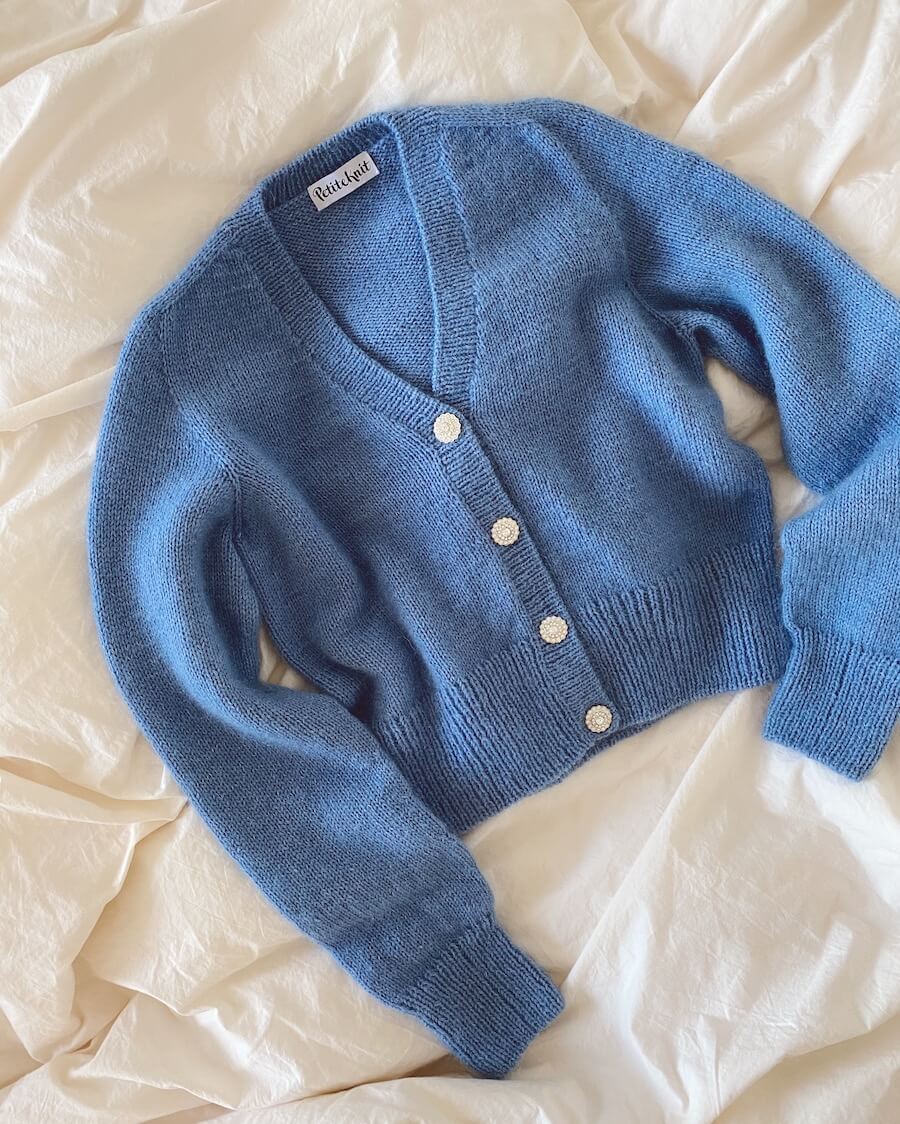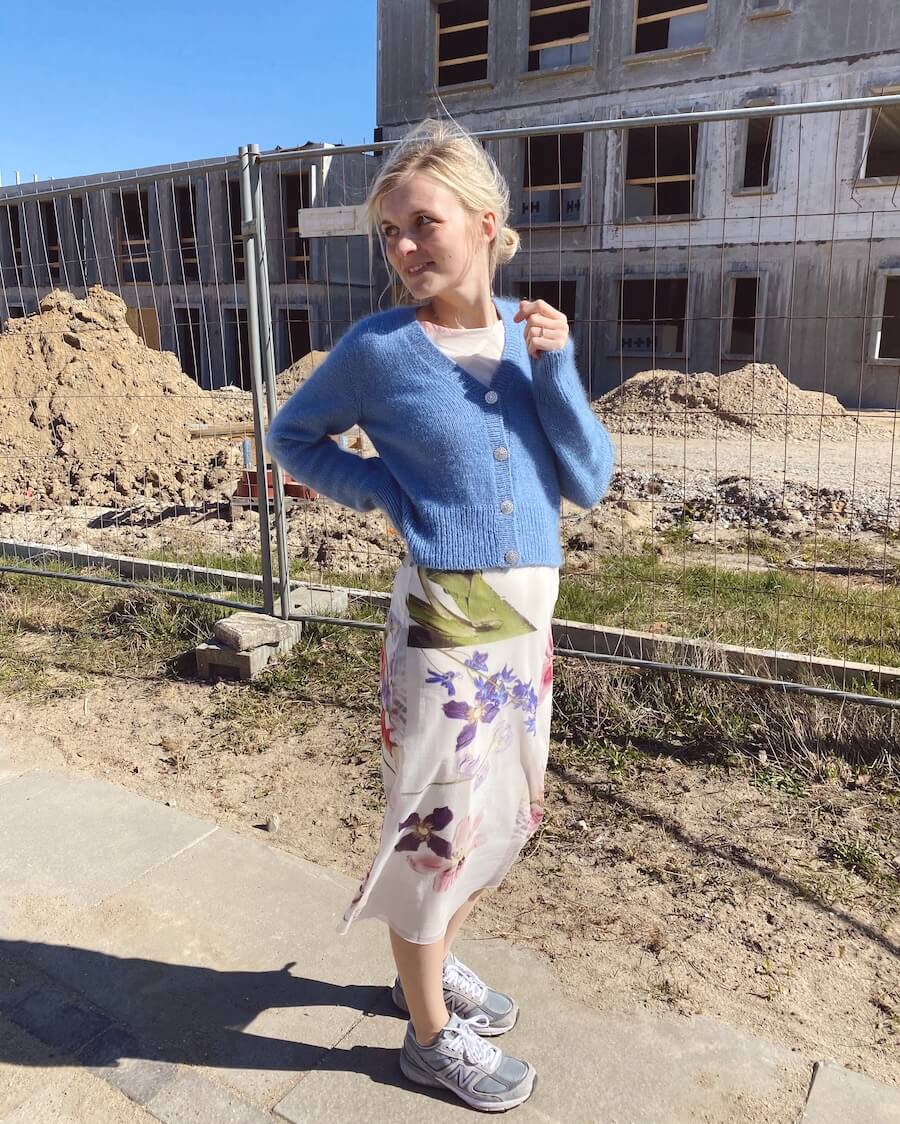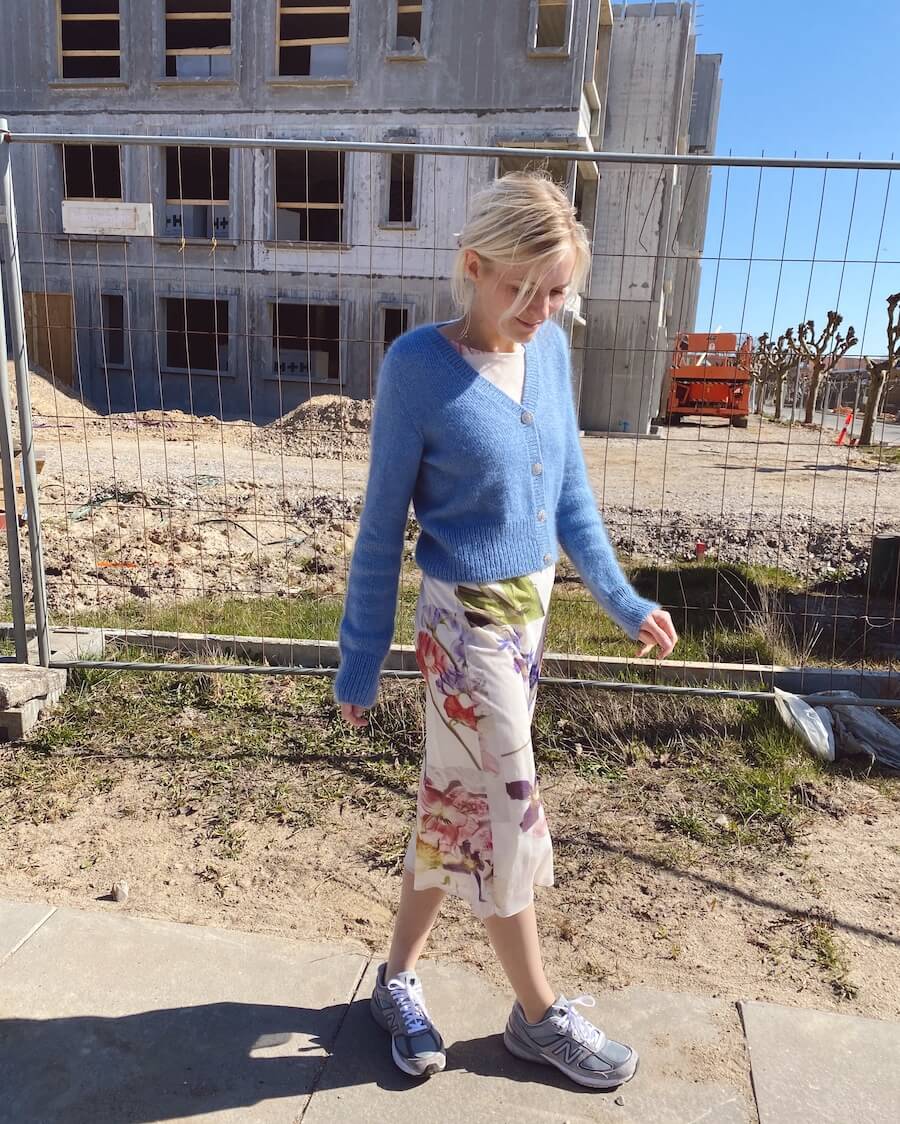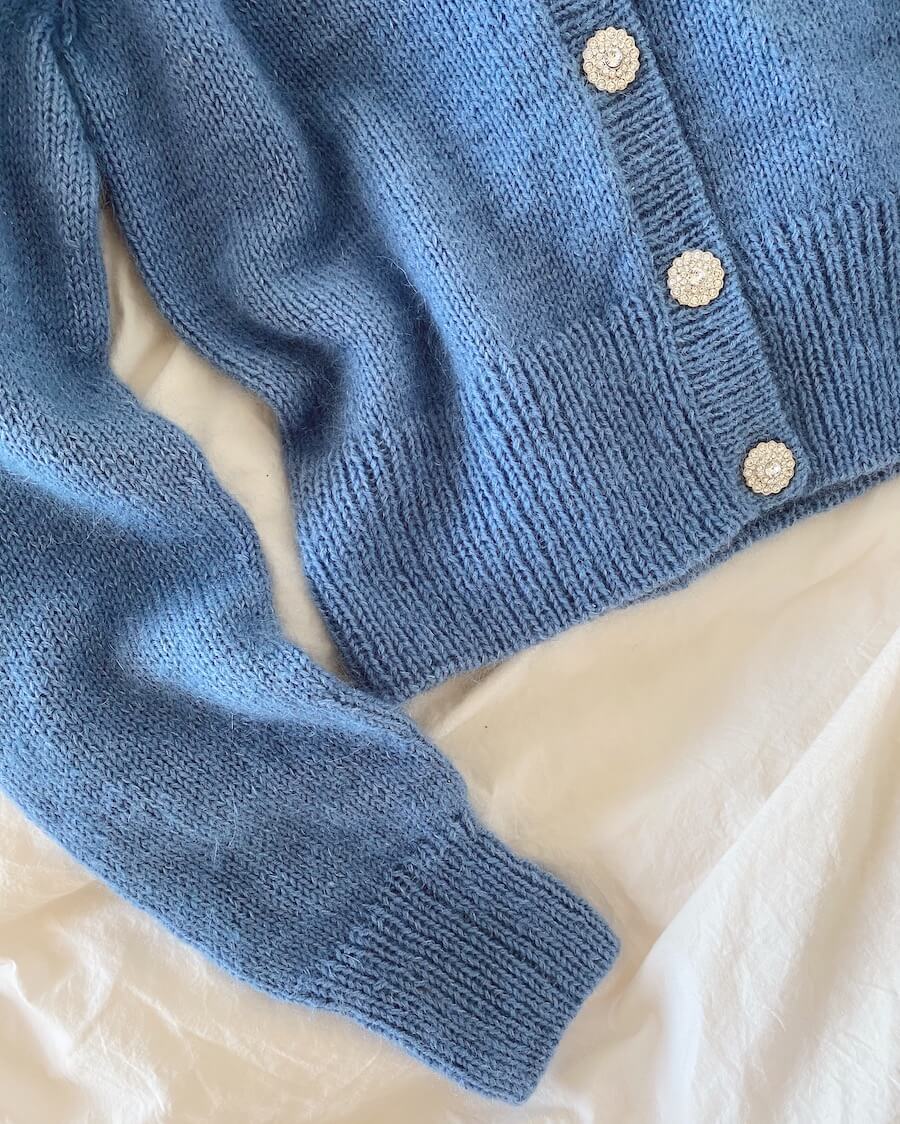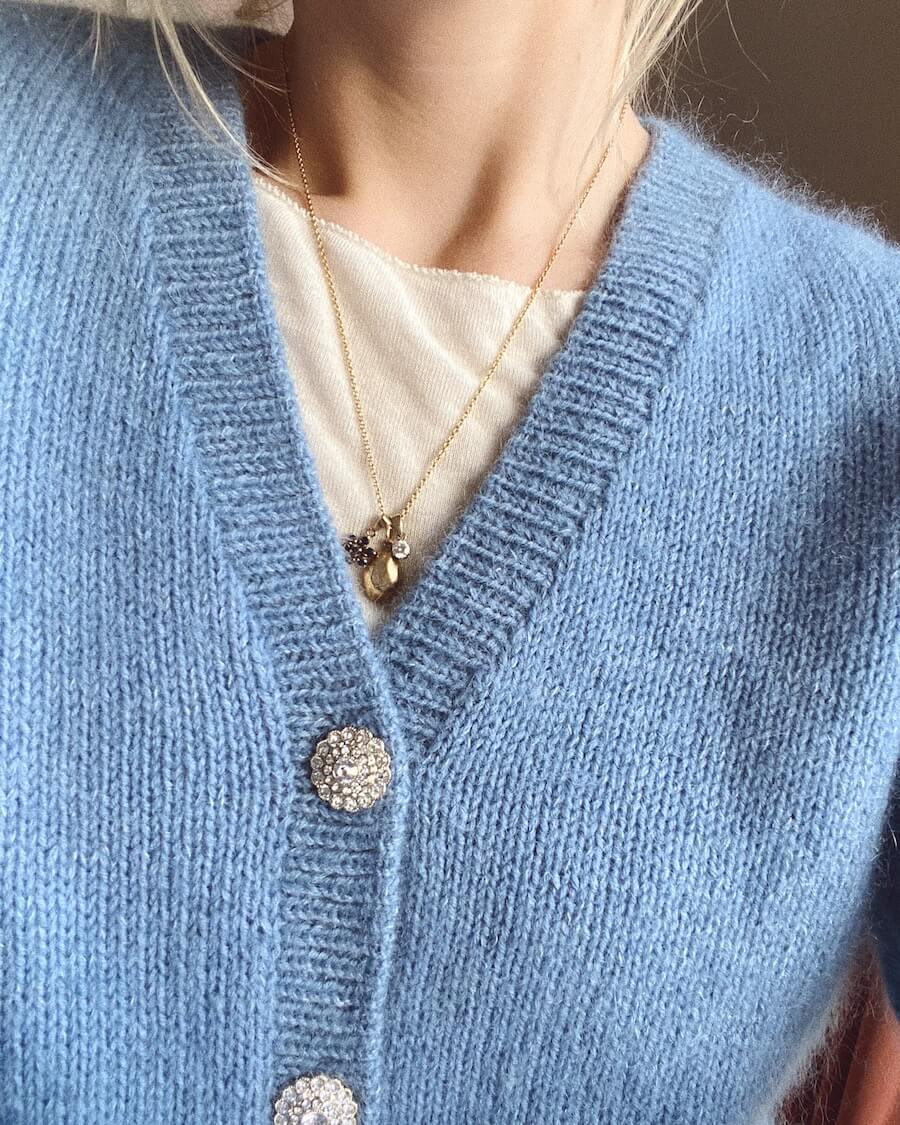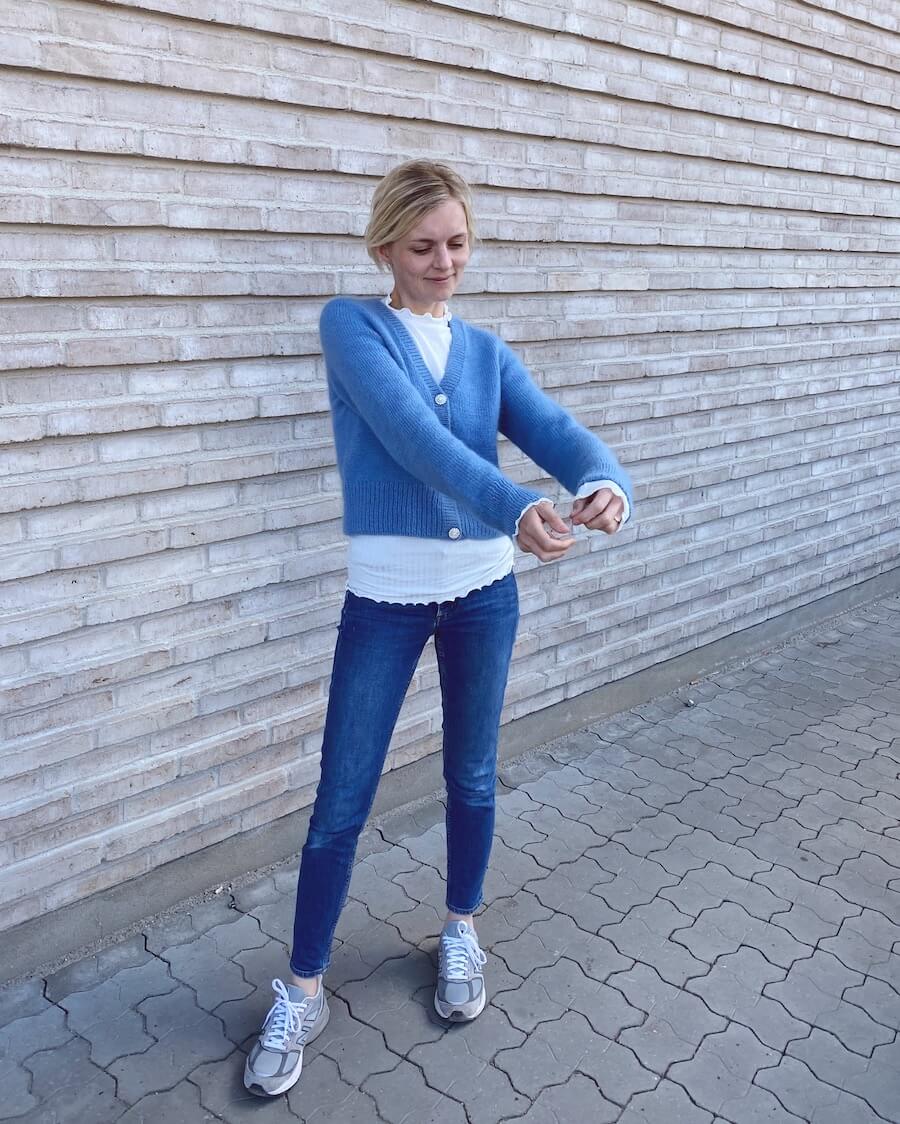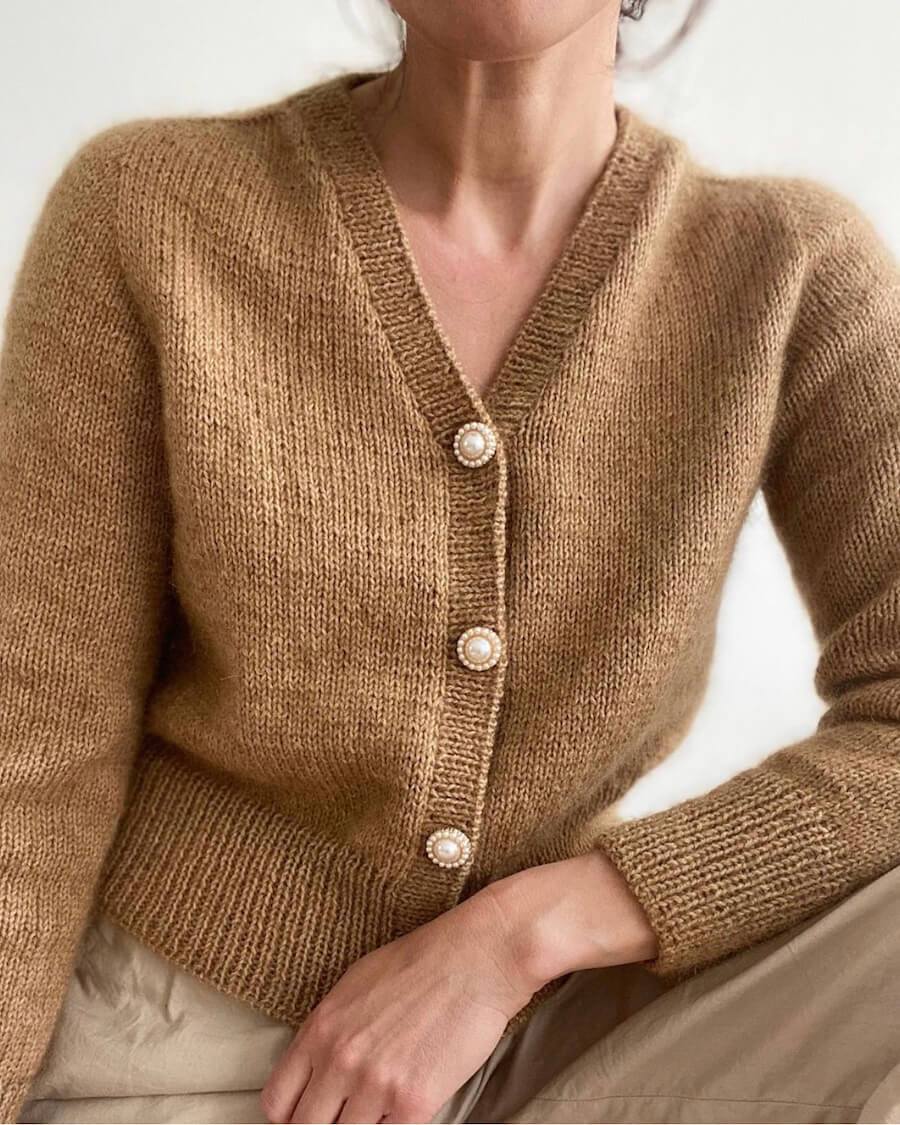PetiteKnit - April Cardigan
This is a printed pattern in Swedish. If you only order the pattern and want it sent to you, it will be sent to your mailbox, even if you choose a different shipping option at checkout. If you also order other items, they will be sent to your desired address.
Couldn't load pickup availability
This is a printed pattern in Swedish.
April Cardigan has a V-neck and is knitted from the top down. The yoke is constructed in such a way that shoulder increases are first knitted on the right and wrong sides. Then sleeve increases are knitted, and finally a piece with raglan increases is knitted. At the same time, increases are knitted along the front edges, so that the V-neck is formed. The sleeves are knitted in the round on double pointed needles or with the Magic Loop technique. Finally, stitches are picked up along the front edges, in the shoulders and at the neck, and a button placket is knitted in rib. Knit a swatch to find the needle size that gives you the right knitting tension.
Size guide
April Cardigan should have a range of motion ( positive ease) of approx. 6-8 cm in relation to your bust measurement. The sizes XS (S) M (L) XL (2XL) 3XL (4XL) 5XL correspond to a bust measurement, measured on your body, of 80-85 (85-90) 90-95 (95-100) 100-110 (110-120) 120-130 (130-140) 140-150 cm. The measurements of the finished cardigan are given on the front of the pattern (note that these measurements only apply if the knitting tension is correct). Measure yourself before you start knitting to determine which size fits you best. If you, for example, If you measure 90 cm around the bust (or the widest part of your body), you should knit a size S. A cardigan in size S has an upper width of 97 cm and in the above example will give a range of movement ( positive ease ) of 7 cm.
Sizes: XS (S) M (L) XL (2XL) 3XL (4XL) 5XL
Cardigan width: 91 (97) 101 (106) 118 (127) 137 (146) 158 cm
Length: 53 (54) 55 (57) 59 (60) 61 (62) 63 cm (measured center back incl. neckline)
Knitting strength: 21 stitches x 28 rows in stocking stitch on 4 mm needles = 10 x 10 cm after washing and blocking
Knitting suggestions: Circular needle 4 mm (60 and 80 and/or 100 cm), circular needle 3 mm (80 or 100 cm), circular needle 3.5 mm (80 or 100 cm), double pointed needles 3.5 and 4 mm
Material: 200 (200-250) 250 (250) 250-300 (300) 300 (350) 350 g Sunday from Sandnes Garn (50 g = 235 m) Together with 100 (100-125) 125 (125) 125-150 (150) 150 (175) 175 g Thin Silk Mohair from Sandnes Garn (25 g = 212 m) or Silk Mohair from Isager Yarn (25 g = 212 m) or Kid Seta from Gepard yarn (25 g =210 m), 4 buttons (ø = 20-23 mm)
Knitting without mohair? Feel free to replace a strand of silk mohair with Alpaca 1 from Isager (50 g = 400 m), Alpakka follower thread from Sandnes (50 g = 400 m) or Alva from Filcolana (25 g = 175 m). Then calculate so that you have the same number of meters as the original yarn. So if you need 125 grams of silk mohair (let's calculate at 210 meters for simplicity's sake), you need 5x210 meters = 1050 meters. This corresponds to 3 balls of Alpaca 1 or Alpakka follower thread, or 6 balls of Alva.
Difficulty level : ★ ★ ★ ★ ★ (5 out of 5).
About difficulty level
About difficulty level
1 ★ – BEGINNER
The patterns in this category are written for the brand new knitter and where you only need to recognize and master the most basic techniques to be able to knit the pattern. The patterns are written in beginner-friendly language with no or very few abbreviations. For many of the patterns, especially the Novice series, there are extra detailed videos that guide you through the different steps in the pattern.
You will encounter the following techniques in the beginner category:
Cross cast-on, knit, purl, twisted knit, decrease, increase, yarn over and regular bind off.
2 ★ ★ – EASY
The patterns in this category are a little more difficult than the beginner patterns but still easy to knit. The patterns are for those who have knitted their first project and are familiar with reading a pattern.
In this category you will encounter abbreviations. Abbreviations that are specific to the pattern will be described. There will be videos that show the techniques that you will use in the pattern.
You will encounter the following techniques in the easy category, in addition to the techniques from the previous category:
Stitching together folded edges, buttonholes, simple structural patterns and picking up stitches.
3 ★ ★ ★ – AVERAGE
The patterns in this category assume that you are experienced and familiar with basic knitting techniques as the patterns contain more difficult techniques such as casting on, picking up stitches and shortened rows. There will be videos showing the techniques you will use in the pattern.
You will encounter the following techniques in the medium category, in addition to the techniques from the previous categories:
Reading a simple chart, Italian cast on, Italian cast off, Judy's Magic Cast On, i-cord, simple double knit, double knit to Italian cast off, German Short Rows, structural patterns, simple assembly, embroidery on knit and multi-color knit.
4 ★ ★ ★ ★– ABOVE AVERAGE
The patterns in this category assume that you are an experienced knitter and can have an overview of a pattern. The patterns may require you to have control over several elements at the same time – such as knitting from a chart and designing at the same time. There will be videos that show the techniques that you will use in the pattern.
You will encounter the following techniques in the above-average category, in addition to the techniques from the previous categories:
Knitting according to a diagram, installing zippers, double knitting and advanced structural knitting such as rib.
5 ★ ★ ★ ★ ★ – DIFFICULT
The patterns in this category assume that you are an experienced knitter who can keep an overview of a pattern and place patterns and designs yourself based on the instructions in the pattern. There will be videos that show the techniques that you will use in the pattern.
You will encounter the following techniques in the difficult category, in addition to the techniques from the previous categories:
Advanced double knitting for e.g. edges, collars and buttonholes, decreases/increases in patterns and shortened rows in structured patterns.

